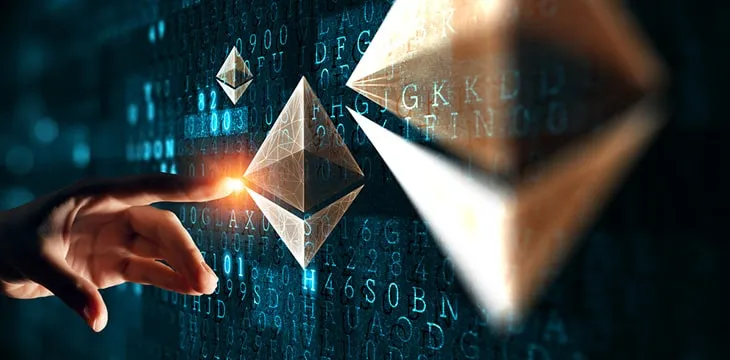|
Getting your Trinity Audio player ready...
|
This post originally appeared on the Unbounded Capital website, and we republished with permission from Sina Nazari & Zach Resnick.
Ethereum’s well-documented problem with its high gas fees is still significant as it costs at minimum upwards of a few dollars to mint a transaction into the Ethereum main chain network, with it sometimes costing significantly more when the network is in demand. The gas problem has led to organizations that wished to leverage the Ethereum network and capabilities to create their own chains using the Ethereum source code, and maintain additional networks very similar to Ethereum in design but with proof of stake. Examples of these blockchains include Binance Smart Chain, EOS, Polygon, Theta, Wanchain, Celo, Syscoin, and Avalanche.
Ethereum mainnet network’s upcoming shift from proof-of-work to proof-of-stake, widely known as “the Merge” is scheduled for late September (September 19, 2022) with expected zero downtime has created a lot of news and excitement about the future of not just ethereum but also the blockchain and digital currency industry as a whole.
It is notable that many investors have invested in Ethereum recently, expecting that the “Merge” will improve the network’s capacity and reduce transaction fees. However, these investors have been wrong in their assumption as the Ethereum Foundation itself has made an announcement that the merge will not be reducing ethereum transaction gas fees.
“Gas fees are a product of network demand relative to the network’s capacity. The Merge… does not significantly change any parameters that directly influence network capacity or throughput,” the Ethereum Foundation said.
The Ethereum Foundation’s announcement clearly states that the network’s capacity and the demand for minting transactions on the network are the drivers of Ethereum gas fees, and that the shift from proof-of-work to proof-of-stake does not influence network capacity.
It is becoming obvious that proof-of-work is not the reason behind the limited scalability of the Ethereum blockchain and its high gas fees, as even a switch to proof-of-stake will not reduce the network’s transaction throughput nor the gas fees. At Unbounded, we have been saying for years that account based blockchains like Ethereum will never be able to compete with UTXO or cash systems like Bitcoin regardless of if they are using proof of work or proof of stake. For those unclear about the differences and tradeoffs between the account based model our existing global financial system is built off, as well as pretty much all blockchains besides Bitcoin (with Cardano as the notable other major exception) our piece Only Cash Scales is a great short starting point.
The one metric which the “Merge” can improve and likely will improve is the network’s energy consumption: it is expected to reduce the ethereum network’s energy consumption by 99.5% by eliminating the energy-intensive mining proof-of-work process. It is worth noting that the proof-of-work mining process can also be utilized in an energy-efficient and “green” manner by allowing for large block sizes. In fact, the Bitcoin SV (BSV) blockchain has been very efficient in terms of energy consumption by allowing for greater than gigabyte-sized blocks to be mined using the same proof-of-work mechanism. Bitcoin SV today as measured by financial and energy cost to transaction is the cheapest and most efficient way of processing transactions in the world. We detail why and how in our second ebook Green Bitcoin. It remains unclear to Unbounded how even with the long awaited Merge how Ethereum could ever be a scalable blockchain used broadly by many people and businesses. Even post merge, we agree with the Ethereum Foundation: it will likely that it will remain the least efficient blockchain and way of processing transactions in the world.
Watch: The BSV Global Blockchain Convention presentation, BSV Blockchain: A World of Good

 07-05-2025
07-05-2025 





